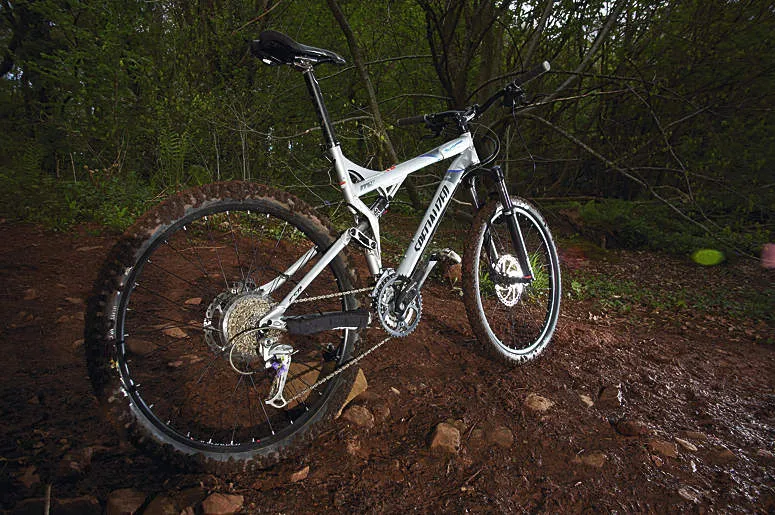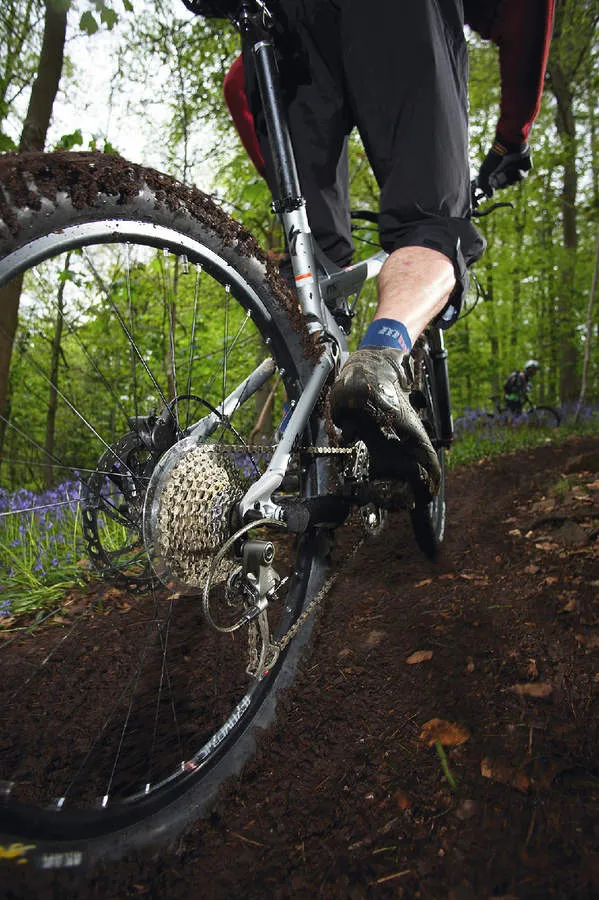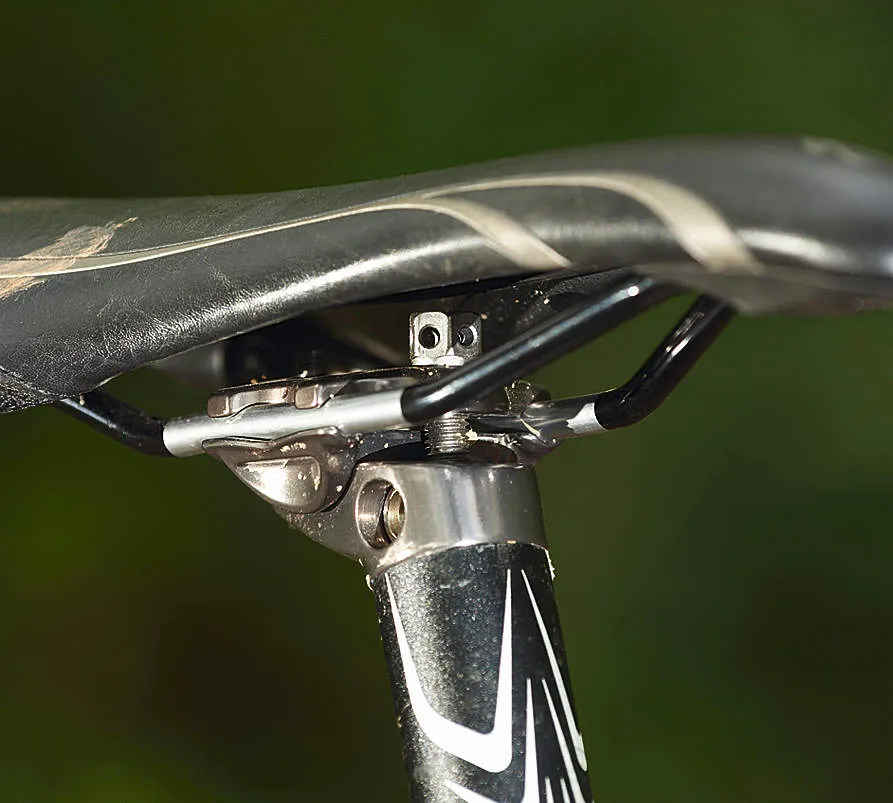Specialized’s FSR XC Comp has a relatively light and refined design, sensibly spec and neutral manners. The suspension needs taming with the lockout lever, though and the brakes are a little enthusiastic for beginners. Nevertheless, this is a competent full-suspension bike with no real vices to worry about.
Specialized has constantly refined its four-bar suspension platform over the years. The FSR XC Comp has many features that have trickled down from previous top-end models of recent years, with a decent build package to boot.
Ride & handling: confidence-boosting suspension
A long top tube on the Large we tested ensured a decent, roomy stance for riders up to 6ft 1in, and allows the option to run a slightly smaller stem if you desire a more hardcore attitude and prefer to attack your trails.
The slightly forward-biased geometry helps ensure that you ‘work’ the front fork and consequently get good grip through the corners, while not being overly nervous for developing riders looking to gain confidence. It’s among lightest in its class, so it was the least punishing at the end of the day and up the climbs.
The basic X-Fusion shock proved itself better than adequate, but rather less than outstanding. With only rebound and air preload settings to adjust, it was easy to set up and the factory-set compression damping setting seemed to be fine.
However, it was difficult to keep the rebound lever in place without it getting knocked or creeping around, because it doesn’t have firm position indents. This made it hard to just leave it in position and forget about it, and consequently led to more use of the lockout lever than was really desirable. This was necessary in order to control the active four-bar link suspension, which can feel a bit wallowy if left under-damped.
Once set up, though, the suspension system was very good. Putting a linkage on the chainstay seems to make for a more flexible frame, but the suspension action is excellent at extracting traction on climbs and swallowed bigger hits with apparent ease on the way back down, all of which helps bolster burgeoning confidence.
Frame: Million-dollar looks, upgrade-worthy platform
The four-inch travel Comp’s butted, alloy M4 frame has some nice graphics and looks like it could have cost a lot more money than it does. Despite being the entry model, it uses exactly the same frame as the next two models up in the range, differing only in components.
Other Specialized models, such as the Stumpjumper, have moved on to the ‘Enduro’ style frame design using new linkage arrangements. Meanwhile, the FSR XC range has kept the older pierced seat tube ‘clamshell’ design, but crucially, the excellent, neutral four-bar linkage suspension action remains.
The only downside with this pierced design is that you may have to cut the seat post to allow the saddle to be dropped for steep descents, and for UK conditions a rear shock guard (£5.99) is highly recommended. Neither of these is a deal breaker, though, as both can be easily sorted at the shop.
Other, more UK-friendly features mean that mud clearance is pretty good, even allowing a 2.35in Maxxis tyre to be slotted in, and the full cable runs keep out the worst of the crud.
Equipment: Enthusiastic brakes, light fork, good finishing gear
The Specialized has a RockShox Tora fork, but it’s a custom SL version with an alloy steerer. That helps keep the weight down, but it worked just the same as the standard Toras.
The new Hayes Stroker Ryde brakes felt slightly ‘wooden’, and had a very short lever pull between being on and off – making them feel almost vicious, although undoubtedly much more powerful than the Shimano Alivios or Avid Juicys common at this price. It was a nice touch to see frame size-specific disc rotors fitted as standard, with the Large and Extra Large versions of the bike getting monster rotors.
The new Ned ‘the Captain’ Overend Sport tyres have a good carcass size for two-inchers, and are competent all-round mixed condition tyres, while Specialized’s own finishing kit is pretty decent stuff that looks and works fine. It’s a sensible, not ostentatious, build specification with no obvious corner-cutting that we could see.
Summary: good entry-level suspension bike
With its predictable handling, this bike reaffirms its suitability as an entry-level suspension bike – it’s neutral in a good rather than bland way. It’s very light for its class and only the basic shock meant that it didn’t pedal quite as light as expected. it is still a good bike for the money that should give riders confidence on the descents.







